When planting a banana tree, many gardeners who are growing their own plants for the first time notice that even though bananas are a delicious, delightful, and favorite fruit that virtually everyone enjoys and love to eat because they are simple to peeling, easily eaten, and even famous as a popular and highly nutritious snack, there are still common problems associated with their care, such as banana plant leaves turning brown. Some issues are easy to deal with, while others are hard to tackle, especially if you are not experienced. I remember my first read on how to address these issues; it helped me understand that keeping plants healthy takes patience and learning, and you can improve their growth with the right ways to fix things before they spread to all your bananas and affect the same garden space.
To fix the most common issues, start by watching the soil moisture, sunlight, and airflow around the tree. Too much water or too little sun can make the plant weak. Some problems are associated with pests, fungus, or nutrient imbalance, and while some are easy to deal with by adjusting care routines, others are hard and may require pruning or treatment to tackle. From my experience, the best ways to address these concerns include improving drainage, trimming damaged leaves, and feeding the plant with a balanced fertilizer so that your bananas grow strong, healthy, and remain the popular, nutritious treat everyone enjoys eating.
The most common banana plant problems and efficient solution:
1. Yellowing Of Banana Leaves
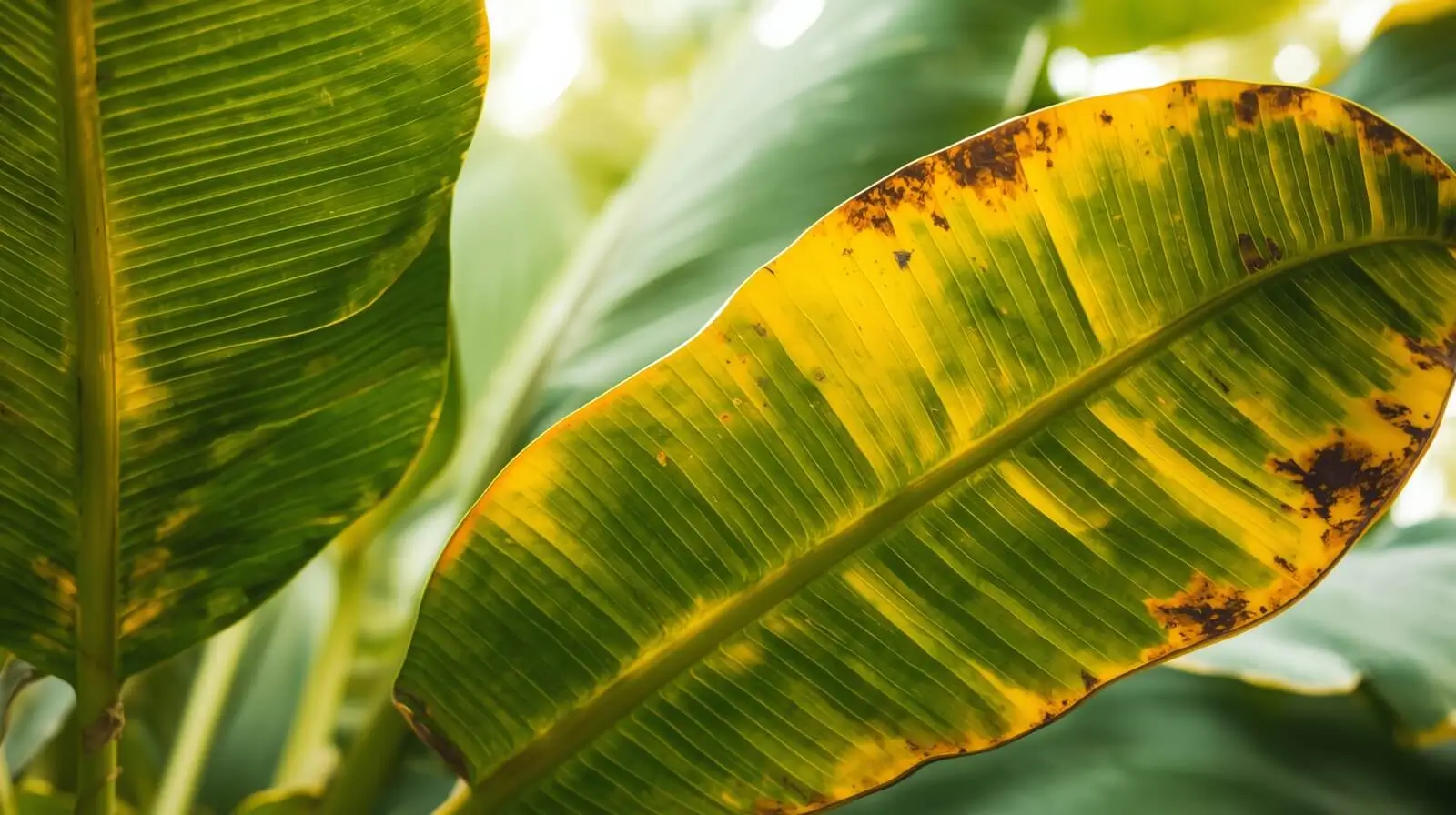
- Why are my banana leaves turning yellow?
Yellowing of leaves or a leaf often happens due to lack of nutrients such as potassium, magnesium, nitrogen, or sulfur in the soil. The margins and tips may turn yellow or old leaves may show yellowing in the middle. Sometimes low water absorption, imbalance in nutrient contents, or too much amount of watering in the garden may be responsible. To confirm the cause, testing your soil through reports is required. - What is the efficient solution for this yellowing?
Apply the solution based on fertilizers recommended in the reports and avoid a single nutrient overdose. If nutrients look fine, check plantations for water drainage. Ignored watering issues can also become problems in banana plantations, so adjust moisture sooner rather than later.
2. Banana Plant Is Not Fruiting

- Why is my banana plant not producing fruit?
Sometimes banana species like dwarf, pink, or velvet types are non-fruit-bearing and used mainly for flowers. Other reasons include unfavorable temperature, wrong pruning methods, slow growth, or weak nourishment. Gardeners in Florida often choose blue java trees because it grows faster and yields fruit within several months if properly planting and cared for. - What is the best way to fix non-fruiting?
Identify causes and apply fixed care early. Ensure proper crown development, correct order of growth stages, and good soil quality. If unsure, get guidance from a local expert or trusted website to avoid repeating the same mistakes.
3. Fusarium Wilt
- What is Fusarium Wilt in banana plants?
Fusarium wilt is a fungus that moves through veins and channels within the tree, affecting transportation of nutrient and water, making the plant deficient and causing yellowing again. This disease once affected the famous Gros Michel cultivars, leaving them nearly extinct. For more research-backed information on Fusarium Wilt and resistant varieties, you can refer to the University of Florida IFAS. - Is there any effective solution?
There is no permanent cure yet, but you can avoid damage by choosing resistant plantations and buy healthy plants from reliable sources. Many growers in plantation farming use resilient varieties to lower risk.
4. Skin Cracking In Bananas
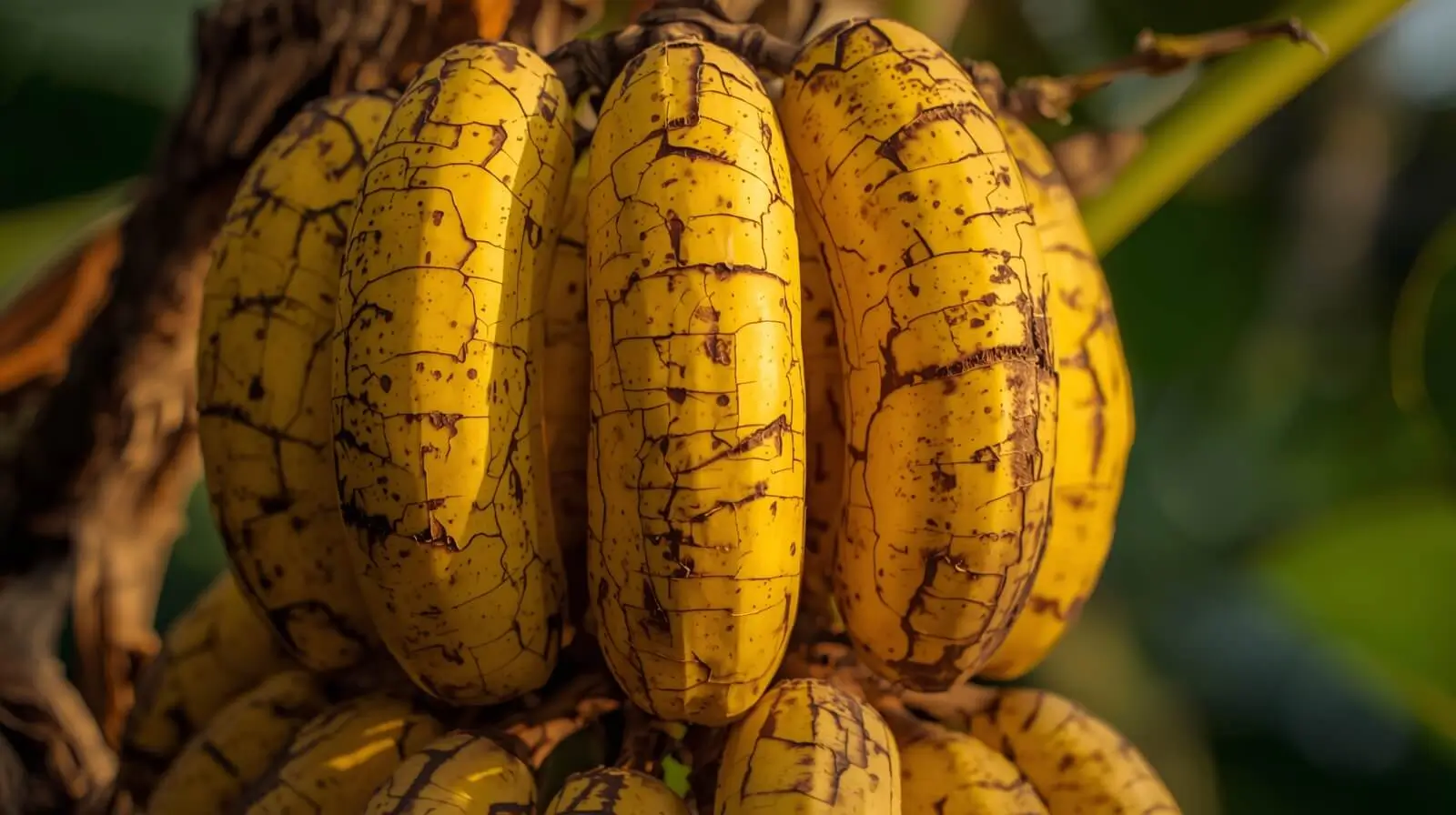
- Why do banana skins crack?
Cracks or cracking usually happen during the fruiting period when temperature rises above certain degrees, especially with heat and celsius stress. High moisture and poor ventilation around the plantation can worsen the problem, causing excessive pressure inside the bananas. - How can this be prevented?
Be observant of forecast conditions. If waves of heat are expected, harvested fruit slightly sooner. Improve reduction of humidity with airflow, and avoid stressing plantain or other species. Watching signs and acting immediately is key to protecting the skin and keeping your banana plants healthy and strong.
If you’re growing a colorful and compact variety, you may also want to explore care steps for the Dwarf Red Banana Tree (this tree is known for its bright foliage and thrives with very similar care conditions).
Disclaimer
The information provided in this article about banana plant problems and solutions is for general educational purposes only. While we strive to share accurate, helpful, and experience-based gardening guidance, every banana plant, soil condition, and growing environment can be different. The results of the suggested methods may vary depending on climate, maintenance, plant variety, and other natural factors.
This content should not be considered professional agricultural or horticultural advice. Before applying any treatments such as fertilizers, pruning methods, or disease control measures, we recommend consulting with a local gardening expert or running soil testing specific to your plantation conditions. We are not responsible for any damage, plant loss, or results that may occur from the use of the information described here.
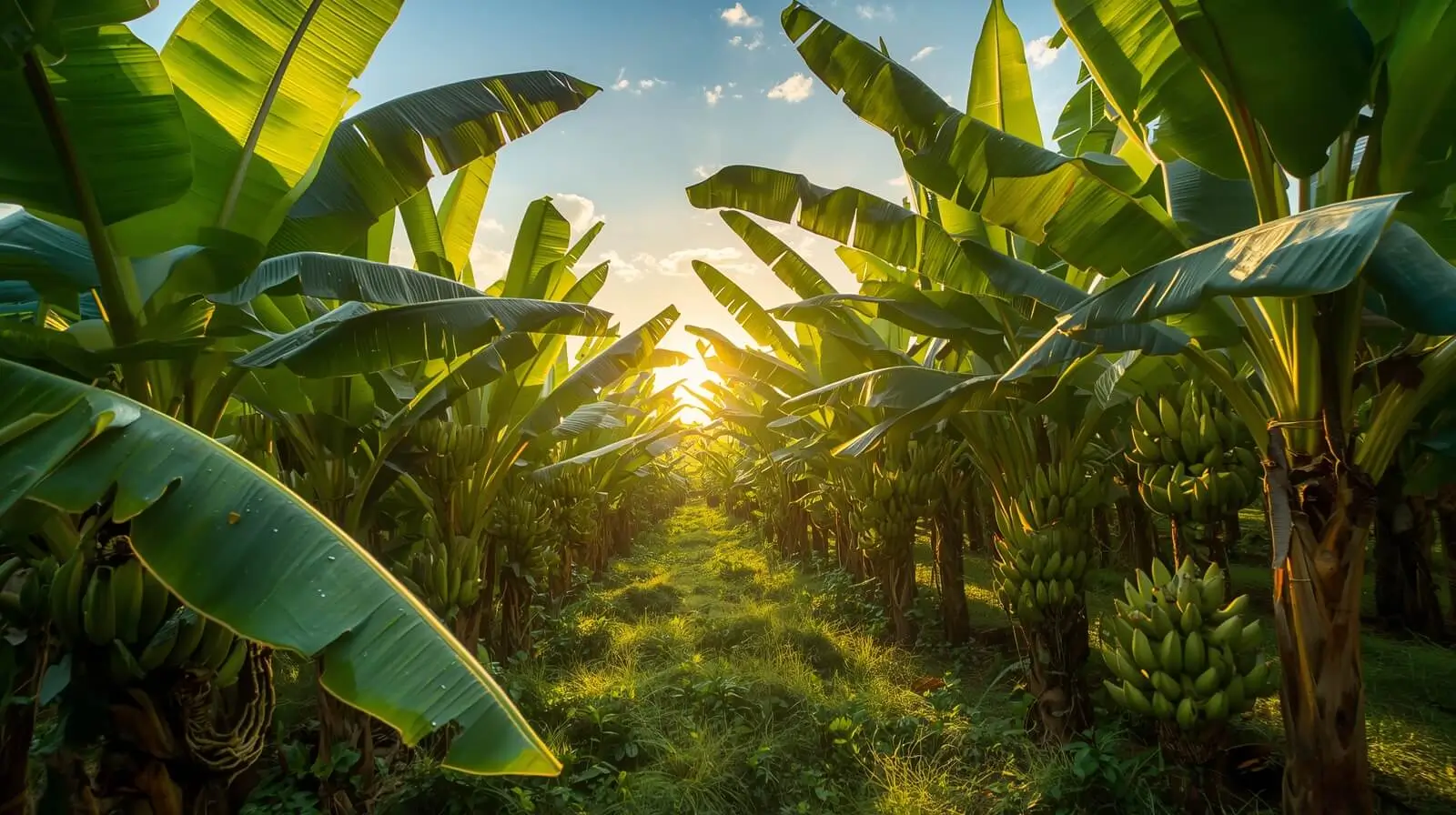
Read Also:
- Gardening & Plant Care Guide for Thriving Plants
- Tropical Fruit Trees: Grow Exotic Paradise at Home (Guide)
Conclusion
Caring for banana plants becomes much easier once you understand the reasons behind the most common problems. Whether it is yellowing leaves, lack of fruiting, Fusarium wilt, or skin cracking, each issue has a clear cause and can be improved with careful observation and timely action. Checking soil nutrients, choosing the right plant varieties, ensuring proper watering, maintaining temperature balance, and watching early signs will help your banana plants stay healthy and productive. With patience and consistent care, your banana garden can thrive beautifully.
FAQs
- Why do banana leaves turn yellow?
Banana leaves usually turn yellow due to nutrient deficiencies, especially lack of potassium, magnesium, nitrogen, or sulfur. Overwatering or poor drainage can also cause yellowing. Soil testing is the best first step. - How long does a banana plant take to produce fruit?
Most fruiting banana varieties take about 8 to 12 months to grow and begin fruiting, depending on the plant type and growing conditions. - What should I do if my banana plant is growing but not producing bananas?
Check your plant variety first. Some are ornamental and do not bear fruit. For fruiting varieties, focus on proper feeding, pruning, sunlight, and correct temperature conditions. - Can Fusarium wilt be cured?
Currently, there is no direct cure for Fusarium wilt. The best prevention is planting resistant varieties and maintaining clean, healthy soil.



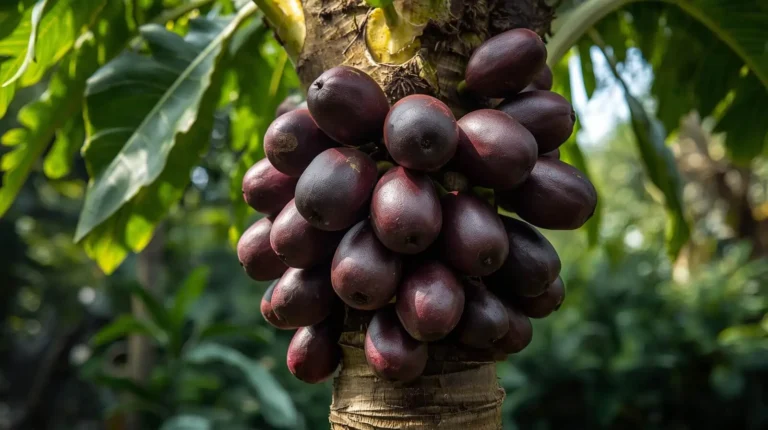
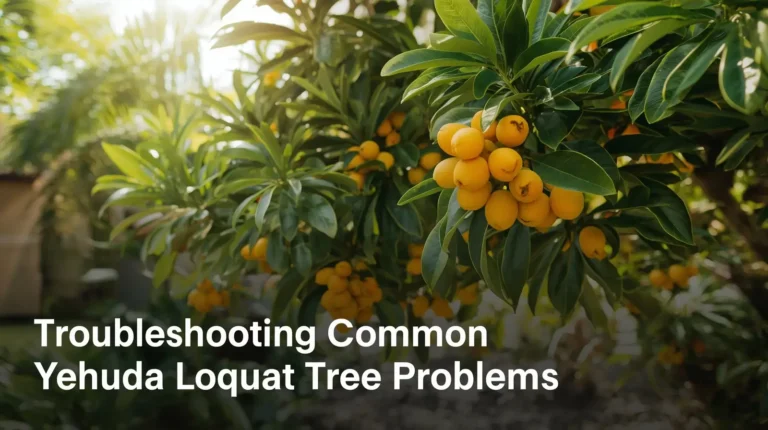
[…] If you enjoy growing tropical fruit trees, you may also like learning how to maintain healthy banana foliage:Read Also: 3+ Shocking Reasons Your Banana Plant Leaves Turning Brown […]
[…] Read Also: 3+ Shocking Reasons Your Banana Plant Leaves Are Turning Brown […]